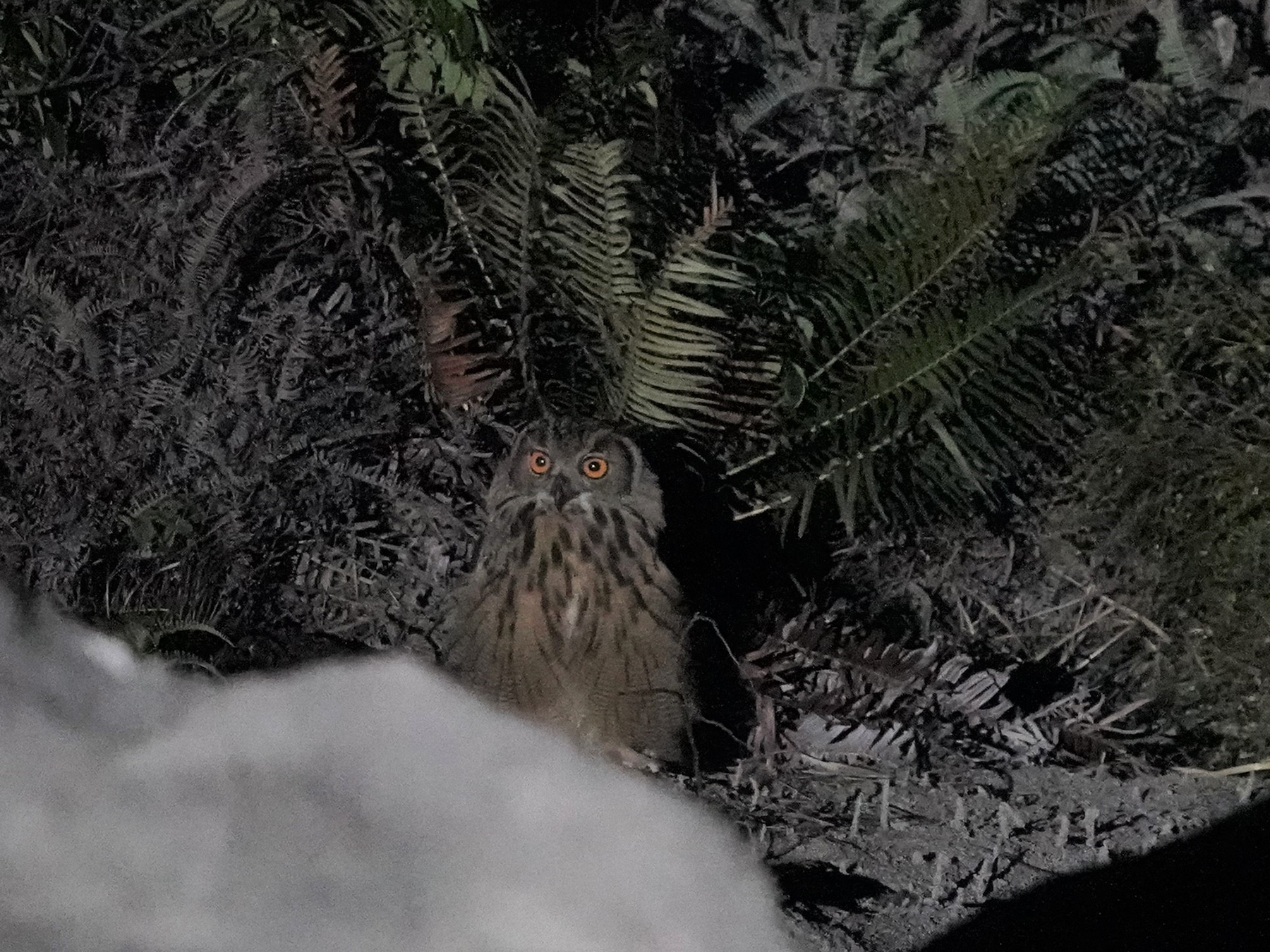On Lantau Island, apart from Tai O, which is known as "Cat Island", there are also "cat" houses in the western part of the island. Yet, the creatures living in the "cat" houses are not cats, they are owls.
As we all know, most owls are nocturnal raptors. One of the species of owls that inhabits Lantau Island is Eurasian Eagle-owl (Bubo bubo). They are the largest owls in Hong Kong, with a remarkable height of up to 70 centimetres when standing, which is about the height of a two-year-old child. Eurasian Eagle-owls have a unique facial disc, ear feathers and a pair of big bright eyes, making them look like cats with upright ears.
Eurasian Eagle-owls have several special physical features to cope with the demands of night hunting: a pair of big eyes allows them to maintain sharp vision in darkness; their heads can pivot 270 degrees horizontally to scan the surrounding area; their flat facial discs help them receive sounds from the surrounding area; their specially adapted feathers muffle the sound produced during flight, allowing them to stealthily approach their prey; their sharp talons help them seise their quarry securely. Each of these physical features is a "secret weapon" for their successful hunting. Eurasian Eagle-owls prefer to inhabit rugged mountain ridges, rest in hidden places during the day and hunt small creatures such as rodents in dense forests at dusk.
Eurasian Eagle-owls are also among the few birds that breed in winter. They start nesting in small caves on mountain slopes from February each year, building "cat" houses. The juvenile owls live in the "cat" houses and will be able to leave the nests and live independently about five months after birth. During which time, their parents will forage nearby and guard the juvenile owls.
In recent years, there have been occasional breeding records of Eurasian Eagle-owls on Lantau Island, primarily because there are more suitable habitats for them, such as open slopes or cliffs with dense shrubbery. However, they are sensitive to human activities, especially during the breeding season. If you are lucky enough to see them standing on the rocks guarding the "cat" houses on Lantau Island, please remember that there are "babies inside" and do not disturb them, so that they can have a good time nurturing their next generation.

